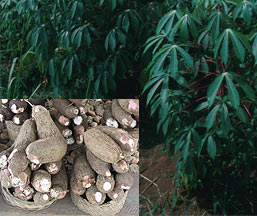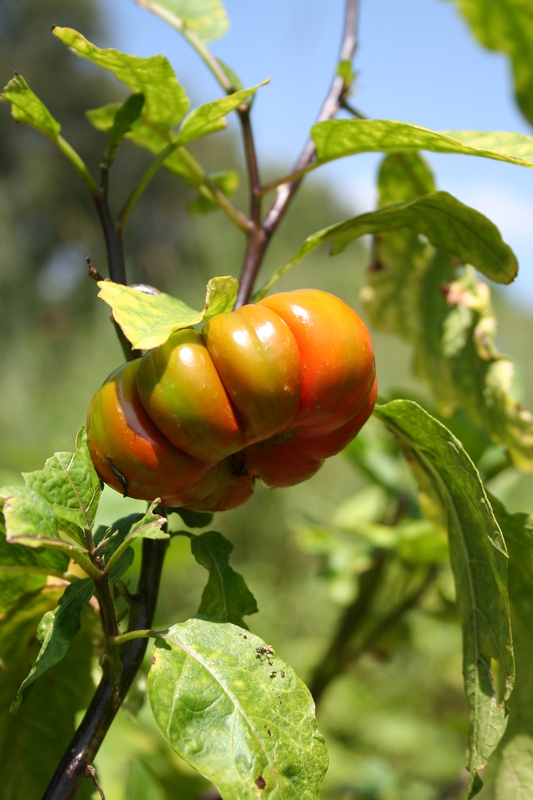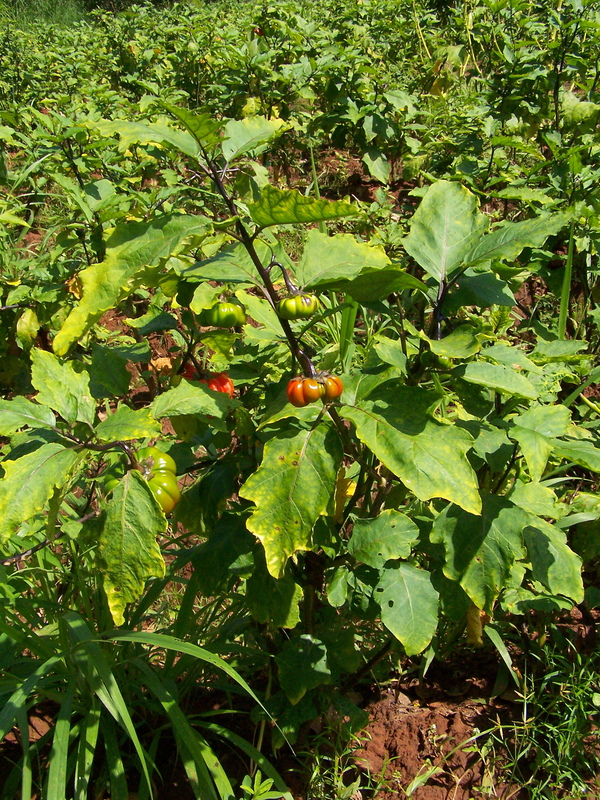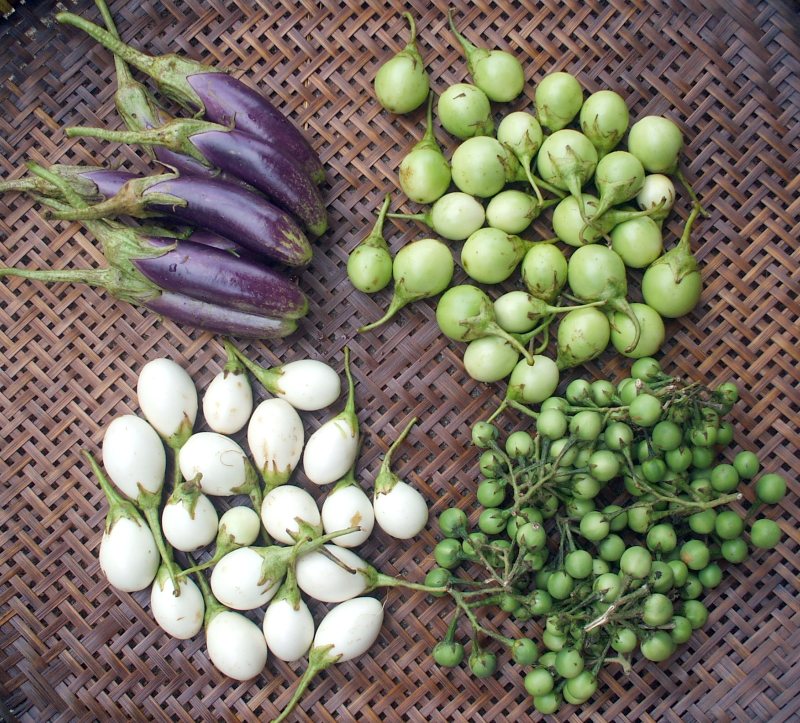The next crop to be profiled will be Cassava. Cassava, Manihot esculenta, is also known as Tapioca and Manioc in English. It's important worldwide as a food crop, a feed crop for livestock, and, increasingly, as a biofuel crop. Below are some of the common names for M. esculenta (Source).
Manihot esculenta Crantz
SYNONYM(S) : Janipha manihot H.B.K. , Jatropha janipha Lour., Jatropha loureiri Steud., Jatropha manihot L., Manihot loureiri Pohl, Manihot manihot (L.) Cockerell, Manihot melanobasis Muell. Arg.
CHINESE :
 Mu shu.
Mu shu.
DANISH : Maniok.
DUTCH : Cassave, Maniok.
ENGLISH : Cassava, Manioc, Tapioca, Tapioca plant.
FINNISH : Maniokki, Kassava.
FRENCH : Manioc, Tapioca.
GERMAN : Cassava, Maniok.
HINDI : Marachini, Mara valle kilangu, Maravalli, Simla aloo, Simul alu.
ITALIAN : Manioca.
JAPANESE :


 Imo noki,
Imo noki, 


 Kyassaba,
Kyassaba, 



 Maniokku,
Maniokku, 




 Tapioka noki.
Tapioka noki.
KANNADA : Maragenasu.
MALAY : Ubi kayu, Kaspe (Indonesia).
MALAYALAM : Kappa, Marakizhangu.
NEPALESE : Simal tarul.
Simal tarul.
PORTUGUESE : Aipim (Brazil), Macaxeira (Brazil), Mandioca (Brazil), Maniba (Brazil).
SANSKRIT : Karrapendalamu.
SPANISH : Caxamote (Guatemala), Guacamote (Ecuador), Farinha, Huacamote (Ecuador), Mandioca (Paraguay), Mañoco (Puerto Rico), Yuca (Lat. America).
SWAHILI : Mhogo.
SWEDISH : Maniok.
TAGALOG : Kamoteng kahoy.
TAMIL : Maravallikizhangu.
TELUGU : Karrapendalamu.
THAI : Mansampalang (Man sam parang, Mun sumpalung).
Mansampalang (Man sam parang, Mun sumpalung).
VIETNAMESE : Bosan hot.
There may be a sweet form / subspecies / species that ought to be recognized. In which case some of the above botanical and common names may apply to it. Some authors place the sweet cassava under M. aipi and the bitter cassava under M. utilissima. Many countries recognize the two types and it seems wise to do so from the culinary and medicinal view points. Taxonomists need to address this perhaps?
 |
| Photo from the Cassava Genome Project |
Manihot esculenta Crantz
SYNONYM(S) : Janipha manihot H.B.K. , Jatropha janipha Lour., Jatropha loureiri Steud., Jatropha manihot L., Manihot loureiri Pohl, Manihot manihot (L.) Cockerell, Manihot melanobasis Muell. Arg.
CHINESE :
DANISH : Maniok.
DUTCH : Cassave, Maniok.
ENGLISH : Cassava, Manioc, Tapioca, Tapioca plant.
FINNISH : Maniokki, Kassava.
FRENCH : Manioc, Tapioca.
GERMAN : Cassava, Maniok.
HINDI : Marachini, Mara valle kilangu, Maravalli, Simla aloo, Simul alu.
ITALIAN : Manioca.
JAPANESE :
KANNADA : Maragenasu.
MALAY : Ubi kayu, Kaspe (Indonesia).
MALAYALAM : Kappa, Marakizhangu.
NEPALESE :
PORTUGUESE : Aipim (Brazil), Macaxeira (Brazil), Mandioca (Brazil), Maniba (Brazil).
SANSKRIT : Karrapendalamu.
SPANISH : Caxamote (Guatemala), Guacamote (Ecuador), Farinha, Huacamote (Ecuador), Mandioca (Paraguay), Mañoco (Puerto Rico), Yuca (Lat. America).
SWAHILI : Mhogo.
SWEDISH : Maniok.
TAGALOG : Kamoteng kahoy.
TAMIL : Maravallikizhangu.
TELUGU : Karrapendalamu.
THAI :
VIETNAMESE : Bosan hot.
There may be a sweet form / subspecies / species that ought to be recognized. In which case some of the above botanical and common names may apply to it. Some authors place the sweet cassava under M. aipi and the bitter cassava under M. utilissima. Many countries recognize the two types and it seems wise to do so from the culinary and medicinal view points. Taxonomists need to address this perhaps?








